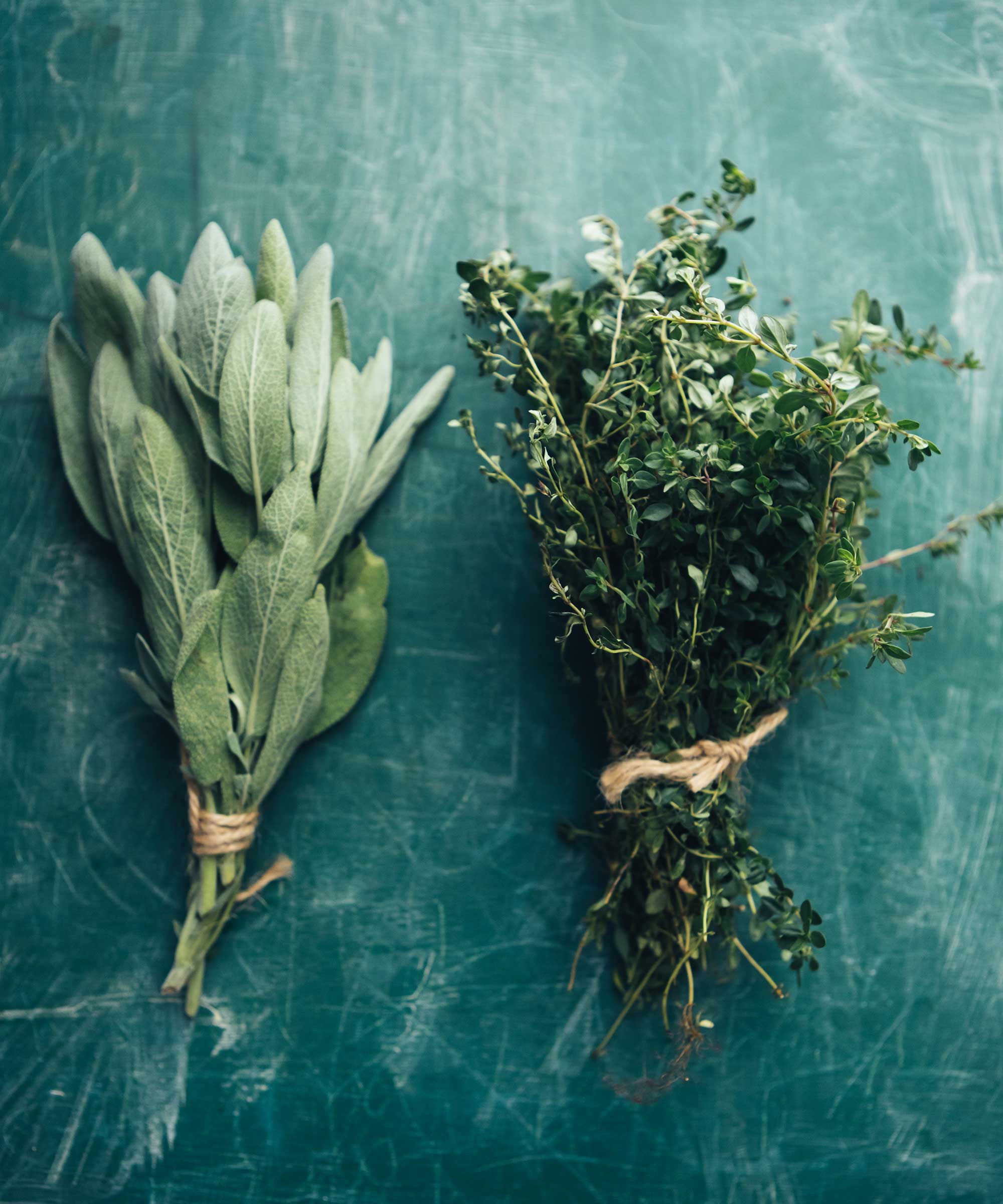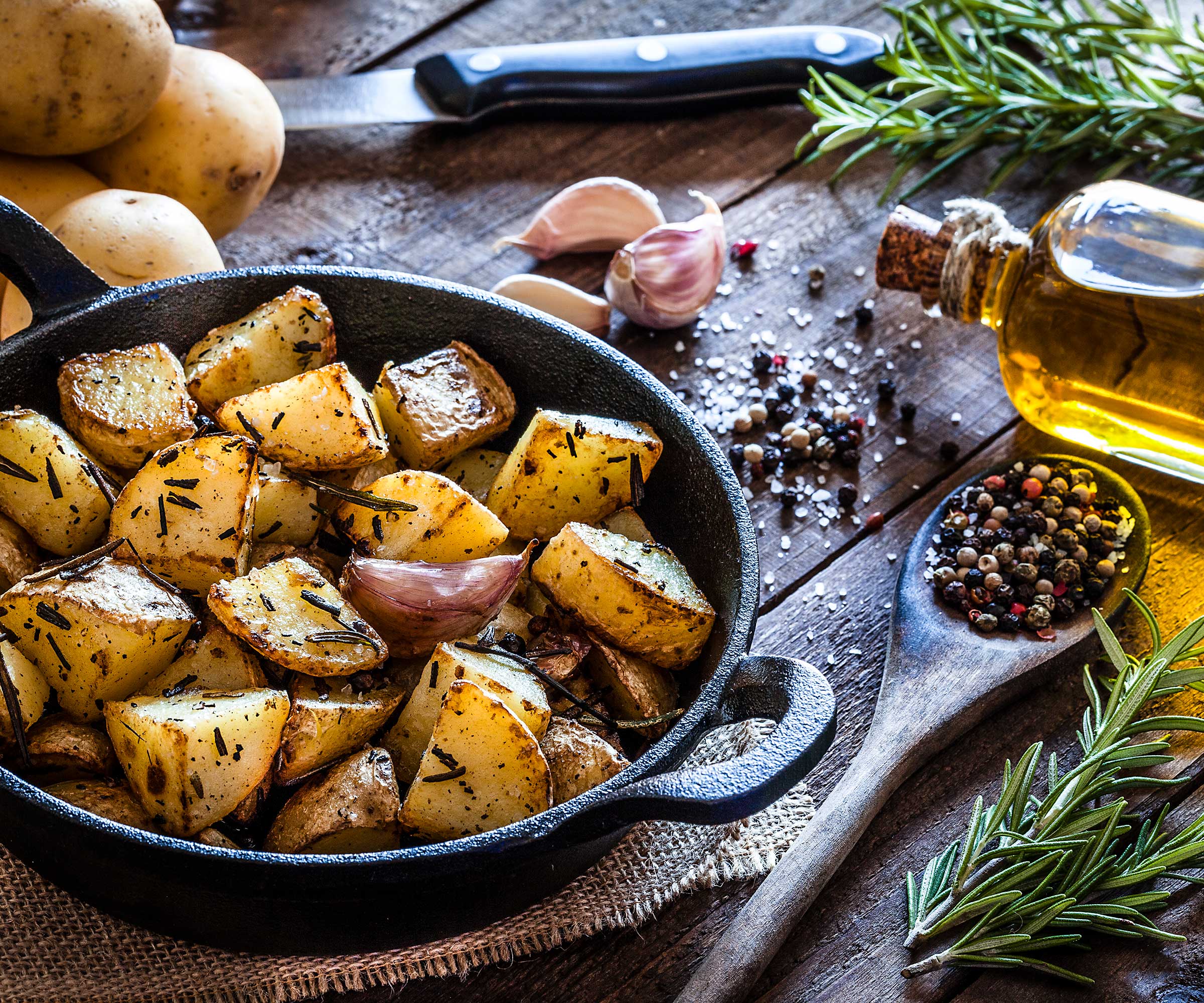
Many would agree that one of the best parts about the festive season is the food. Whether you're planning on feeding the masses or enjoying a more peaceful feast for just one or two, there is a lot to look forward to.
From cooked meats and piles of roast veg to sumptuous puddings and sparkling drinks, we all have our favorites from the traditional, seasonal fare. And, adding homegrown herbs is an easy way to make these tasty treats extra delicious.

5 winter herbs for Christmas
The pros share their tips for harvesting and using herbs throughout the festive season.
1. Rosemary

Rosemary can be harvested all year round, which is perfect for holiday cooking, says gardening expert Sean Lade. What's more, regularly pruning rosemary encourages healthy regrowth and keeps the plant in shape, he adds.
In the kitchen, rosemary pairs beautifully with meat dishes like roasted turkey or lamb – and it can also elevate your roasted potatoes, Sean continues. 'The aromatic, earthy rosemary flavor is a quintessential addition to your holiday culinary creations.'
While you can use rosemary fresh, it can also be dried and stored for later use.
'To dry, hang stems upside down out of direct light in a room with good air circulation and low humidity,' writes Allison Vallin Kostovick in her book The Garden Maker’s Book of Wonder (available from Amazon). 'Don’t tie stems together too tightly, as mold can grow if there is no airflow. Dry smaller stems on screens or racks.'*
Top tip: Trimmed branches of rosemary can also be used as part of your festive decor, Sean says, where it will infuse the air with its delightful scent.
2. Sage

Sage's earthy, aromatic flavor pairs wonderfully with pork dishes and is an essential ingredient for homemade stuffing, Sean says.
In her book, Allison explains how to harvest and dry this fragrant herb:
- Cut the fresh, lighter green outer leaves, leaving the woodier stems to encourage bushier plants.
- Gather in small bundles and hang them upside down in a well-ventilated, dry location for about two weeks.
- Once the bundles are brittle to the touch, store them in airtight containers, keeping the leaves whole and crushing only when needed.*
Sage leaves can also be used fresh in some recipes.
3. Thyme

'Thyme is a perfect herb for Christmas day dinner,' says Sean. He suggests using it to season your roasted meats and stews, or to make herb-infused butter.
It can also provide a botanical garnish to festive tipples, and is a delicious addition when roasting root veg. Thyme also pairs well with lemon in baked goods; think cookies, cakes, and pies.
Thyme can be harvested year-round, although you should avoid taking too many stems at one time. It can be used fresh or dried.
4. Parsley

Outdoors, parsley dies back over winter. But, if you grow pots indoors or in your greenhouse, you can continue to use it in the kitchen.
'To harvest parsley, pick the outer leaves regularly, allowing the inner leaves to continue to grow,' Sean instructs.
It's commonly used fresh, and finely chopped. 'Sprinkle it over your main courses, add it to salads for a burst of flavor, or use it to make delicious herb butter,' Sean recommends.
'For best flavor, grow the flat-leaf varieties,' recommends Allison in her book. 'The curly variety is often sidelined on the dinner plate as a garnish more than a tasty meal addition.
'After harvesting, dry and wash the sprigs,' she writes. 'Loosely roll them in a tea towel or in paper towels and place in a resealable plastic bag for up to a week. Or, place freshly cut stalks in a jar of water and store in the refrigerator.'*
Top tip: 'Don’t simply compost the stems; toss them into the freezer and use later to flavor stocks and soups,' Allison writes.*
5. Bay

Bays are beautiful evergreen trees that are perfect for patio pots. And their leaves make a useful herb in the kitchen.
To harvest, simply pick off unblemished leaves before washing them. Don't remove more than one-third of the foliage at one time to avoid stress on the plant.
Note that fresh bay leaves can have a bitter flavor. So, hang them up for a few weeks to dry out before use. Whole, dried leaves can be added during the cooking stage to enhance stews, mulled drinks, and bread sauce, and then removed before serving.
FAQs
Can you grow winter herbs indoors?
Yes, some herbs can be grown successfully indoors if you provide the right conditions. Most prefer plenty of light and well-draining soil.
What tools do you need to harvest winter herbs?
Most winter herbs can be harvested using a pair of sturdy pruners or scissors, ensuring they are sharp and clean. This makes it easy to cut precisely through any woody stems and avoids accidentally uprooting or causing damage to the remaining plant.
Love the idea of using homegrown produce in your festive feast? Next year, perhaps consider growing carrots, potatoes, or even Brussels sprouts, to make your Christmas dinner even more special.
*Excerpted from The Garden Maker’s Book of Wonder © 2023 by Allison Vallin Kostovick. Used with permission from Storey Publishing.







